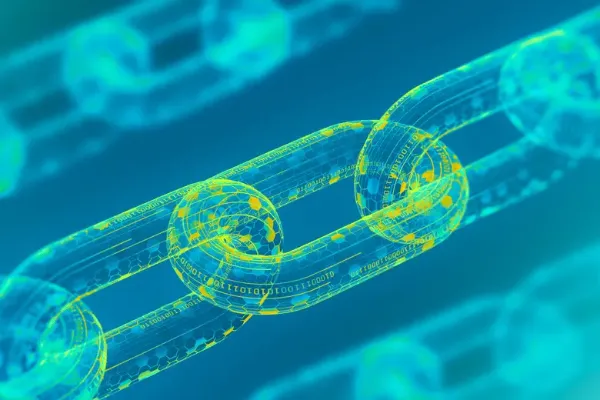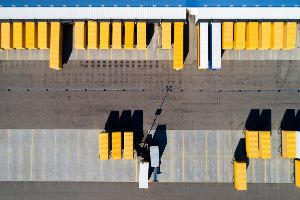What will the future of e-commerce bring, and what challenges does it face?
Great promises and some uncertainty. This is, in summary, the panorama of the e-commerce sector, internationally and in Spain. Its growth in the medium term will continue to be conditioned by strongly upward customer acquisition costs and new cybersecurity challenges.

Table of contents:
The data speaks for itself: Spain has been one of the last OECD economies to resist the rise of e-commerce. But the two pandemic years, 2020 and 2021, have forcibly imposed this global trend in our country.
In 2020, there was a 24% growth in the volume of purchases made online. A year later, at the end of 2021, this percentage had grown an additional 35%. With these figures, the digital penetration rate in Spain (i.e. the percentage of online sales vs the retail sector as a whole) has gone from a meagre 3.5% in 2015 to a respectable 8.7%, surpassing neighbouring countries like Italy (7.9%) and Portugal (7.6%) in this indicator. The latest projections suggest that, if the trend does not change, Spain will be close to a penetration rate of 15% in 2025, barely three points below the global average. However, it will remain far from economies as digitised as South Korea (45%).
Spain will be close to a penetration rate of 15% in 2025, barely three points below the global average.
Growing turnover in an increasingly crowded environment
Another significant indicator, beyond the sustained increase in the penetration rate, is the increase in the total turnover of e-commerce, which reached 13.7% in 2021 according to figures from the Spanish National Securities Market Commission.
This clearly shows that the digitalisation process of commerce in Spain has speeded up significantly. Sectors such as fashion, toys, technological accessories and food are consolidating as major drivers of growth in e-commerce in the Spanish market. What's more, the revenue from online purchases has grown in the first quarter of 2022, against a global context of decline due to the removal of restrictions on face-to-face activities.
.webp)
According to David Atanet, Market Intelligence Manager at Prosegur, "we come from years of almost exponential growth that the pandemic and lockdowns have markedly consolidated". This opens up a very promising scenario for this economic field, although not without uncertainties and threats.
Atanet finds it especially significant that the percentage of small Spanish companies that sell their products online reached 26.9% in 2021, while it had been stuck in the range of around 20% from 2016 to the acceleration in 2020. He points out that "the global closure of a significant portion of physical distribution centres at some points in the pandemic led many consumers to change their habits and, consequently, a large number of purely offline distributors or manufacturers with a very small presence online took the step of opening digital shops".
The uncontrolled growth of acquisition costs
In other words, the circumstances triggered demand and this caused an unusual growth in supply. Once the barrier had been broken, with a growing number of companies trying to gain digital market share, "there has been a scenario of unleashed hyper-competitiveness, where some of the pioneers have lost their qualitative advantage and an increasing number of companies have launched their own platforms or are fighting to gain a foothold in the main common outlets or market places".
"This is causing the acquisition costs to increase significantly", explains Atanet. "For starters, advertising fees have gone up very noticeably." At the same time, companies try to attract new customers by "trying to collect more first-party data from end users, as a strategy to respond to the upcoming elimination of third-party cookies [browsers like Chrome, Safari and Firefox at looking at different dates to eliminate them and thus safeguard the privacy of users]."
Another strategy to reach a good position in the frantic race of e-commerce consists, according to Atanet, in "developing branding campaigns that reinforce brand awareness and attractiveness as much as possible". These acquisition resources entail, naturally, investments that not all the new competitors are in a position to make.
.webp)
Online retailers in the crosshairs of hackers
But perhaps the biggest risk brought by this massive emigration to digital business environments is "the increase in cyberattacks." For the first time, a high percentage of retailers are placing themselves "on the front line of this type of technology-based crime", according to Atanet. In fact, a study carried out by the British security company Sophos shows that 45% of digital retailers have received some type of ransomware attack in 2021.
E-commerce is therefore the most affected sector, ahead of education (44%) and commercial transactions between companies (42%). Atanet stresses that "in 2021 there have been very striking attacks of this type that have generated a lot of media attention, as well as a certain climate of social alarm".
For David Atanet, e-commerce is currently experiencing "an accelerated growth crisis" worldwide and in Spain.
For David Atanet, e-commerce is currently experiencing "an accelerated growth crisis" worldwide and in Spain. The massive entry of new companies and the lack of a robust technological base in many of them has generated "this scenario of unbridled competition and problems related to cybersecurity". The sector will consolidate in the coming years, both due to a natural selection of new players and an upward stabilisation in demand, and thanks to "a foreseeable increase in digital security that will make companies less vulnerable".
In other words, turbulence is expected at the next bend in the road. But, when the storm passes, the progressive digitisation of commerce will still be there, strengthening its position as an unstoppable process with enormous potential.
.8057962467967301760.jpg)

%20portada.webp)
.jpg)
.webp)
